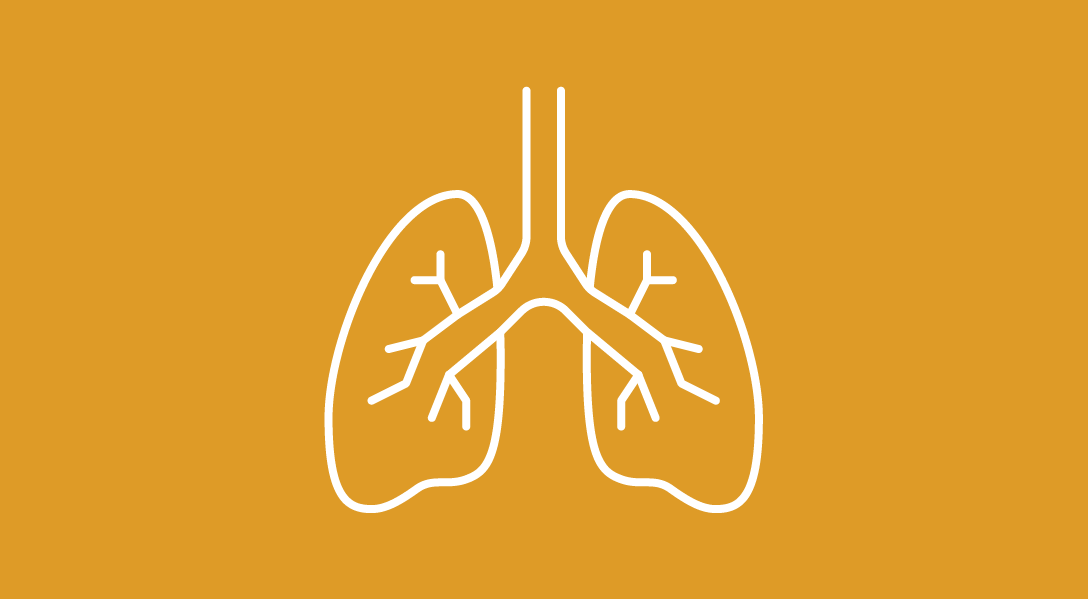GSK5764227 Receives Breakthrough Therapy Designation for Extensive-Stage Small Cell Lung Cancer
Breakthrough therapy designation has been granted by the FDA to GSK5764227 for potential use in some patients with extensive-stage SCLC.
GSK5764227 Receives Breakthrough Therapy Designation for Extensive-Stage Small Cell Lung Cancer

Breakthrough therapy designation has been granted by the FDA to the B7-H3–targeted antibody-drug conjugate (ADC), GSK5764227 (HS-20093), to treat extensive-stage small cell lung cancer (ES-SCLC) with disease progression on or following platinum-based chemotherapy.1
The designation is supported by findings from the phase 1 ARTEMIS-001 study (NCT05276609). Data presented at the 2023 ASCO Annual Meeting showed that the agent, which is comprised of a fully humanized, anti–B7-H3 monoclonal antibody that is covalently linked to topoisomerase inhibitor payload, had a manageable toxicity profile and demonstrated early efficacy in pretreated patients with solid tumors.2
Notably, in the 11 patients with SCLC, the objective response rate (ORR) achieved with the ADC was 63.6% (95% CI, 30.8%-89.1%). The disease control rate (DCR) was 81.8% (95% CI, 48.2%-97.7%). Moreover, the median progression-free survival (PFS) was 4.7 months (95% CI, 1.4-not applicable) and the 3-month PFS rate was 72.7% (95% CI, 37.1%-90.3%). Activity was also observed in patients with SCLC who progressed on a prior derivative of camptothecin treatment.
Additional data from the trial will be shared at this year’s IASLC World Conference on Lung Cancer.1
“ES-SCLC is aggressive with poor prognosis and significant need for new treatments,” Hesham Abdullah, senior vice president and global head of Oncology, R&D, at GlaxoSmithKline, stated in a news release. “Today’s breakthrough therapy designation supports our ambition to accelerate GSK’227 for these patients as part of our broader ADC program focused on developing new treatment options with transformational and first-to-market potential.”
The open-label, multicenter, dose-escalation and -expansion ARTEMIS-001 study enrolled patients with locally advanced or metastatic solid tumors who were not selected for B7-H3 expression.2 The dose-escalation portion of the research was designed as accelerated titration plus i3+3. The ADC was given intravenously, every 3 weeks at the following doses: 1.0 mg/kg (n = 3), 2.0 mg/kg (n = 1), 4.0 mg/kg (n = 3), 6.0 mg/kg (n = 3), 8.0 mg/kg (n = 23), 12.0 mg/kg (n = 18), and 16.0 mg/kg (n = 2). The dose-expansion phase will comprise cohorts of patients with non–small cell lung cancer (NSCLC), SCLC, metastatic castration-resistant prostate cancer, esophageal carcinoma, head and neck squamous cell carcinoma, and other solid tumors.
The primary end point for the dose-escalation phase of the research is to determine the maximum tolerated dose (MTD) of GSK5764227. For the expansion phase, the primary end point is ORR by RECIST 1.1 criteria.
As of the data cutoff date of March 10, 2023, a total of 53 patients were enrolled and received the ADC at varying doses. In the total population, the mean age was 51.3 years (standard deviation [SD], 12.52) and mean body weight was 69.84 kg (SD, 13.71). Patients who received treatment had NSCLC (n = 29), SCLC (n = 11), sarcoma (n = 9), breast cancer (n = 2), melanoma (n = 1), and esophageal carcinoma (n = 1). The mean number of prior lines of systemic therapy received was 3.2 (SD, 2.27). Most patients had an ECOG performance status of 1 (83%).
Additional efficacy data indicated that in the total population, the ORR achieved with the ADC was 30% (95% CI, 17.9%-44.6%) and the DCR was 86% (95% CI, 73.3%-94.2%). The median PFS was 5.4 months (95% CI, 4.3-7.0).
When broken down by dose level, ORRs were 0% (95% CI, 0%-70.8%), 0% (95% CI, 0%-97.5%), 33.3% (95% CI, 0.8%-90.6%), 0% (95% CI, 0%-70.8%), 40.9% (95% CI, 20.7%-63.6%), 31.3% (95% CI, 11.0%-58.7%), and 0% (95% CI, 0%-84.2%) for those who received the agent at 1.0, 2.0, 4.0, 6.0, 8.0, 12.0, and 16.0 mg/kg, respectively. The respective DCRs at these dose levels were 66.7% (95% CI, 9.4%-99.2%), 0% (95% CI, 0%-97.5%), 100% (95% CI, 29.2%-100%), 86.4% (95% CI, 65.1%-97.1%), 93.8% (95% CI, 69.8%-99.8%), 50% (95% CI, 1.3%-98.7%), and 86.0% (95% CI, 73.3%-94.2%).
Regarding safety, a total of 3 patients experienced dose-limiting toxicities. One patient who received the agent at 12.0 mg/kg experienced grade 3 febrile neutropenia; 1 patient who received the agent at the highest dose of 16.0 mg/kg experienced grade 4 neutropenia which lasted for longer than 72 hours; and the last patient, who also received the agent at 16.0 mg/kg, experienced grade 4 thrombocytopenia and grade 4 neutropenia that lasted for longer than 72 hours. The MTD of the ADC was determined to be 12.0 mg/kg.
The most common adverse effects experienced by 20% or more of patients included decreased white blood cell count, decreased neutrophil count, anemia, nausea, decreased lymphocyte count, pyrexia, decreased appetite, decreased platelet count, hypoalbuminemia, asthenia, vomiting, infusion-related reactions, constipation, decreased weight, decreased total protein, COVID-19, hypokalemia, hyponatremia, diarrhea, increased aspartate aminotransferase, and increased blood bilirubin.
GlaxoSmithKline, the pharmaceutical company that acquired exclusive worldwide rights to GSK5764227 from Hansoh Pharma (with the exception of China’s mainland, Hong Kong, Macau, and Taiwan) earlier this year, shared plans to initiate global phase 1/2 studies in the second half of 2024 to support a registrational pathway for the agent.1
References
- GSK receives US FDA breakthrough therapy designation for its B7-H3-targeted antibody-drug conjugate in relapsed or refractory extensive-stage small-cell lung cancer. News release. GlaxoSmithKline. August 20, 2024. Accessed August 20, 2024. https://www.gsk.com/en-gb/media/press-releases/gsk-receives-us-fda-breakthrough-therapy-designation/
- Wang J, Duan J, Xing L, et al. ARTEMIS-001: phase 1 study of HS-20093, a B7-H3–targeting antibody-drug conjugate, in patients with advanced solid tumor. J Clin Oncol. 2023;41(suppl 16):3017. doi:10.1200/JCO.2023.41.16_suppl.3017



